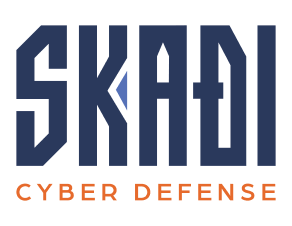Keeping production lines running is tough enough without worrying about cyberattacks.
When an Ontario-based automotive parts manufacturer saw alerts piling up and cyber-insurance premiums rising, leadership turned to SKADI Frostbow for AI-driven protection. Six months later, the company reports fewer alerts, faster resolution, and annual cost savings topping $700,000. Here is the before-and-after story.
The Starting Point: High Alert Fatigue, Rising Risk
- Endpoints in scope: 500 laptops, shop-floor PCs, and engineering workstations
- Average monthly security alerts: 2,300
- Mean time to resolve (MTTR): 42 hours
- Annual incident-related spend: $US1.67 million (overtime, downtime, external consultants)
Manufacturing has become a prime target for ransomware and intellectual-property theft. The average breach cost in the sector climbed to $US4.88 million in 2024 (eidebailly.com), driven by long recovery windows and supply-chain penalties.
Why SKADI Frostbow Was Chosen
- AI-powered threat detection that learns normal machine behavior and flags anomalies in real-time.
- Endpoint protection that covers both legacy PCs on the plant floor and newer devices.
- A North American 24/7 SOC that triages alerts and guides in-house IT staff.
- Built-in reporting that satisfies insurer requirements, lowering premiums.
IBM research shows organisations that deploy security AI and automation save an average of $US2.22 million per breach compared with peers (ibm.com). The manufacturer’s CFO saw that potential and green-lit a phased rollout across every endpoint.
Deployment: From Proof of Concept to Full Coverage in 30 Days
Week 1: SKADI engineers installed lightweight agents during scheduled maintenance, resulting in no production downtime.
Week 2: SKADI Frostbow’s machine-learning models began baselining regular traffic across CNC controllers, ERP servers, and office networks.
Week 3: Initial tuning cut false positives by 68%, freeing the two-person IT team to focus on higher-value tasks.
Week 4: Insurer received SKADI’s compliance report, triggering a 12% premium reduction under the policy’s “continuous monitoring” clause.
Results at a Glance (First Six Months)
| KPI | Before SKADI Frostbow | After SKADI Frostbow |
| Monthly security alerts | 2,300 | 740 |
| Mean time to resolve | 42 h | 9 h |
| Annual incident spend | $US1.67 M | $US0.97 M |
| Premium savings | – | $US200,000 |
That results in a 42% decrease in incident-related costs, while also strengthening the firm’s overall security posture.
How the Savings Break Down
Fewer Disruptions
Automated endpoint protection isolates suspicious processes in seconds, preventing malware from reaching production machines. Lost-time incidents fell sharply, resulting in $ US310,000 in reclaimed productivity.
Faster Resolution
SKADI Frostbow’s AI enrichment slashed investigation time. The in-house team now clears most alerts without outside consultants, saving $US160,000 in service fees and overtime.
Lower Cyber-Insurance Premiums
With continuous monitoring evidence, the insurer applied a mid-term rate cut worth $US200,000 per year, validating the business case for proactive cyber defense.
Lessons for Other Manufacturers
- Start with visibility. You cannot protect what you cannot see.
- Automate response. AI-driven playbooks trim MTTR from days to hours.
- Leverage insurer incentives. Many carriers reward proven controls with lower rates.
- Protect every endpoint. Legacy machines are often the weakest link.
Manufacturing executives recognise the stakes: cybercrime is on track to cost businesses $US10.5 trillion globally by 2025 (eidebailly.com). SKADI Frostbow shows that plants of all sizes can gain enterprise-grade protection and measurable cost savings without hiring a whole security team.
